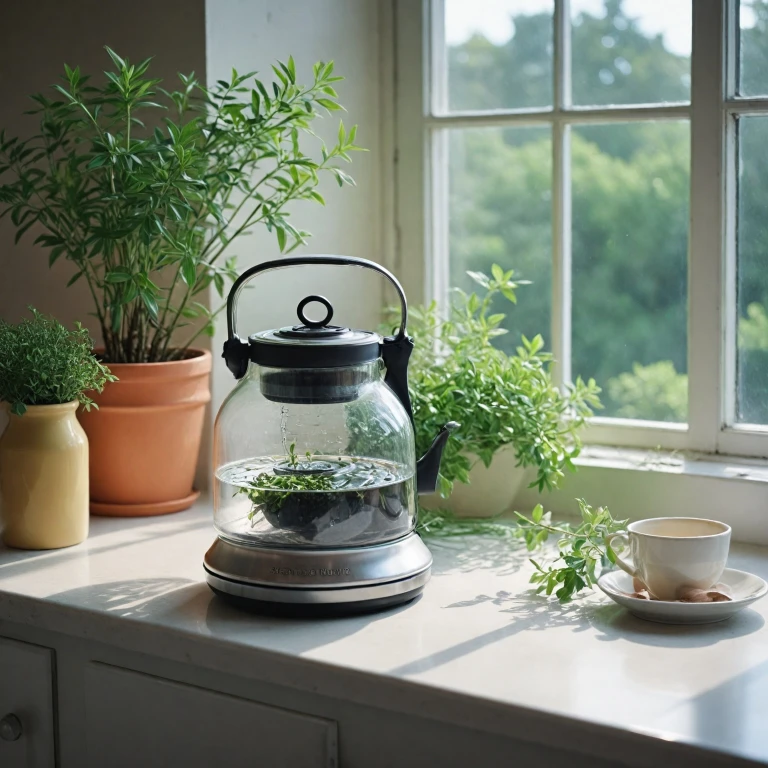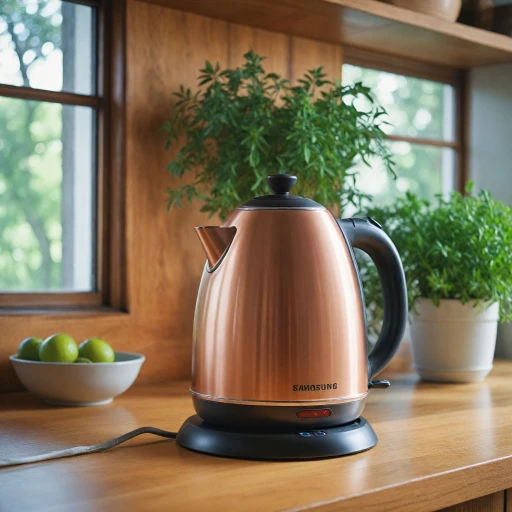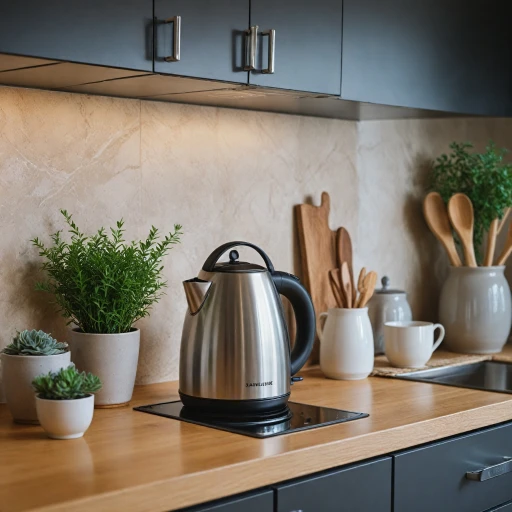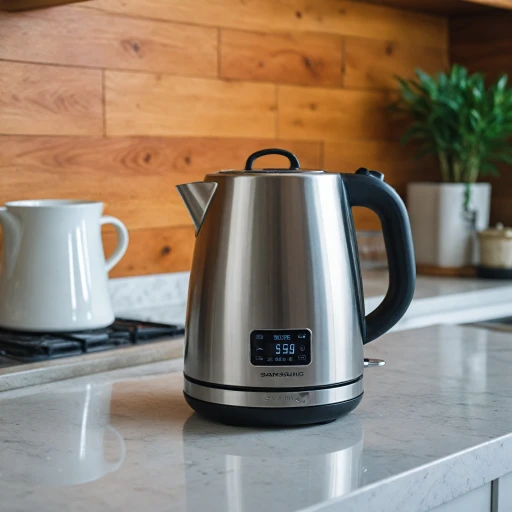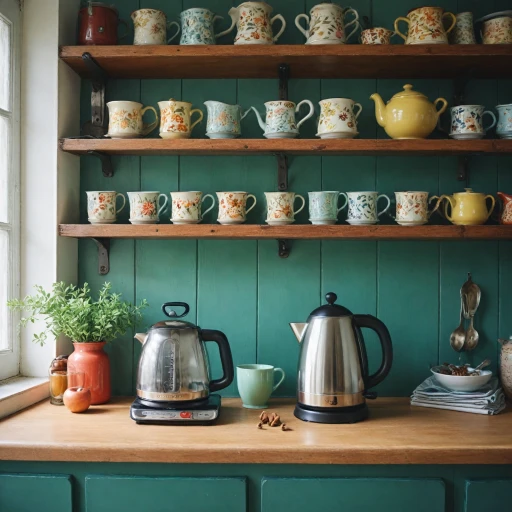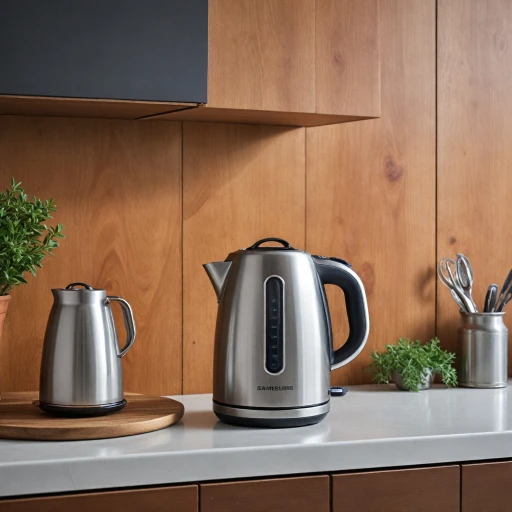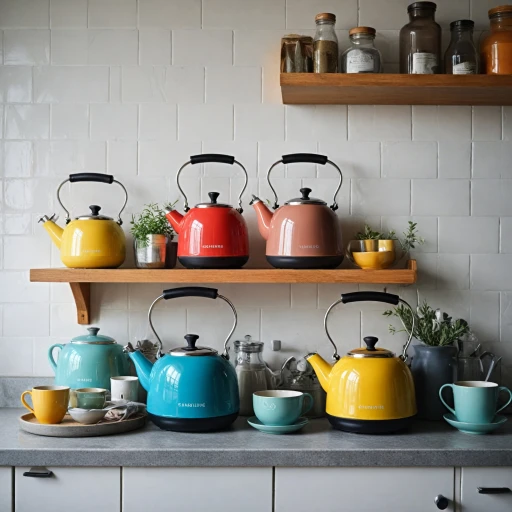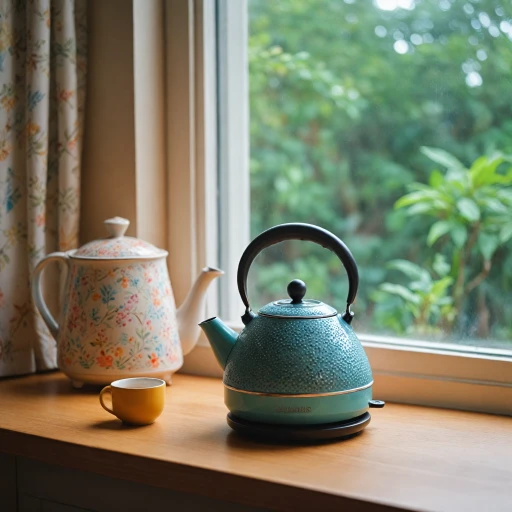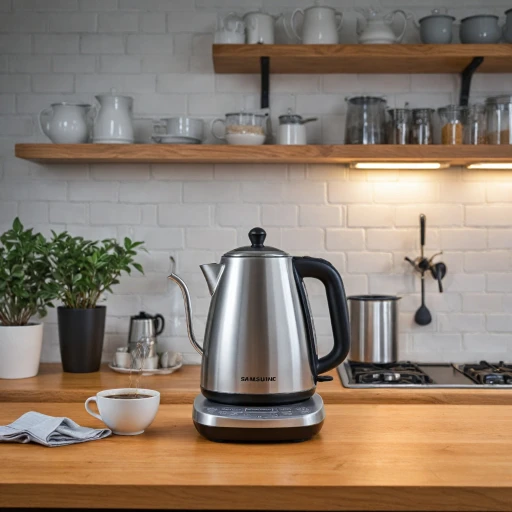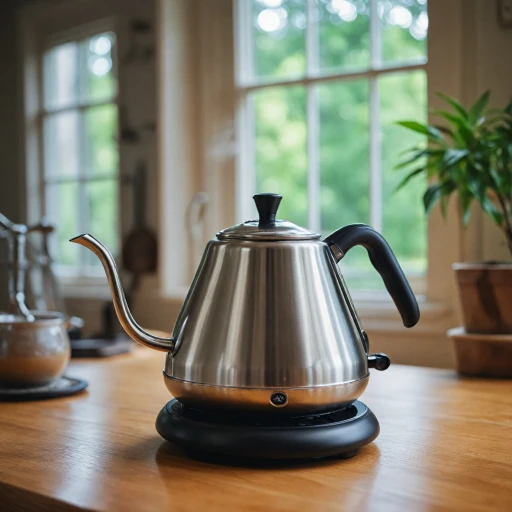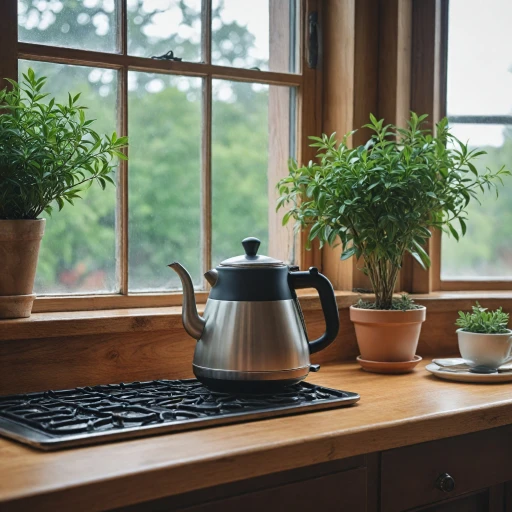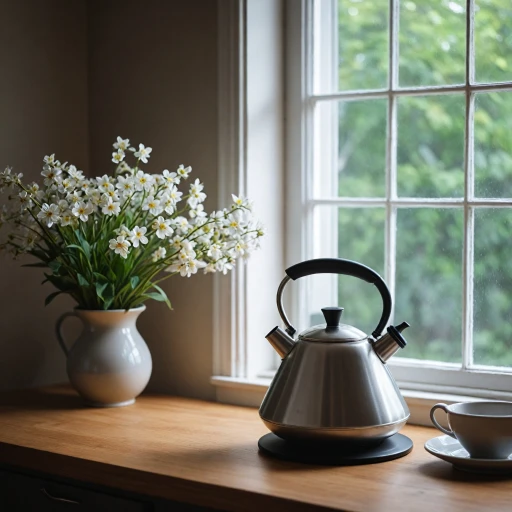
Understanding the Need for Plastic-Free Kettles
The Shift Towards Non-Plastic Options
In recent years, the move to eliminate plastic from household appliances has gathered steam, especially regarding electric kettles. The rising concern for personal and environmental health has propelled consumers towards plastic-free alternatives. The tea kettle, a staple in many kitchens, is no exception to this growing trend.
Electric kettles play a crucial role in our daily routines, whether it's boiling water for a comforting tea or preparing a precise cup of pour-over coffee. The demand for plastic-free kettles stems from mounting evidence highlighting the potential health risks associated with plastic components, particularly when exposed to the high temperatures of boiling water.
Concerns include the leaching of chemicals into the water, such as BPA (Bisphenol A), which is often used in the production of certain plastics. This awareness has led many consumers to seek alternatives that guarantee BPA-free features. By choosing a plastic-free electric kettle, individuals are making a conscious decision to prioritize safety and sustainability.
Given this context, exploring the charm of retro electric kettles, with their classic appeal and stainless steel construction, is becoming a significant focus for those looking to enhance their kitchen's eco-friendliness while maintaining functionality. If you're interested in diving deeper into the allure of retro-style kettles, you might find this stylish choice an intriguing topic.
Materials Used in Plastic-Free Electric Kettles
Exploring Safe and Sustainable Alternatives
Understanding the materials used in plastic-free electric kettles can pave the way for healthier and environmentally friendly choices. When you switch to these alternatives, you're not only embracing a more sustainable lifestyle but also prioritizing your well-being. Firstly, stainless steel stands out as the top choice for many looking to avoid plastic. This material is known for its durability and ability to retain heat, making it an excellent option for electric kettles. Stainless steel kettles usually come with a robust body and a well-made handle, ensuring a lasting and safe experience. Next, borosilicate glass is another popular choice for those interested in plastic-free options. Glass kettles offer a sleek, modern design while providing a clear view of the boiling water inside. They're also easy to clean and free from potentially toxic chemicals often found in plastics. For enthusiasts of pour-over coffee and tea, gooseneck kettles made of either stainless steel or glass are favored for their precision and control. The long pour spout allows for an even flow, essential for brewing the perfect cup. When considering these alternatives, it's also worth noting their compatibility with temperature control features. Many stainless steel and glass kettles come with built-in temperature settings, providing the perfect brew whether you're making tea or coffee. In summary, selecting materials like stainless steel and borosilicate glass for your electric kettle can ensure a plastic-free, healthy, and efficient experience. For further insights, check out this comprehensive guide on the benefits of choosing a stainless steel electric kettle and make an informed decision for a plastic-free lifestyle.Health Benefits of Going Plastic-Free
Benefits of Prioritizing Your Well-being
In a world where health consciousness is gaining momentum, choosing a plastic-free electric kettle can significantly impact your daily wellbeing. These kettles reduce exposure to potentially harmful chemicals often associated with plastic, such as BPA. Ensuring your boiling water remains pure is paramount, and by opting for a plastic-free option, you effectively minimize the risk of toxic tea and harmful leaching.
Materials like stainless steel and borosilicate glass used in these kettles provide a safer alternative. Unlike plastic, they don’t release chemicals when exposed to high temperatures. Whether you're preparing a morning tea or a comforting pour-over coffee, using a toxin-free kettle ensures that the water remains as pure as possible.
Going plastic-free with your electric tea kettles also comes with added benefits beyond safety, such as enhancing the flavor of your beverages. Many users report a noticeable difference in taste when switching to materials like stainless steel or glass, attributed to the absence of plastic odor or aftertaste.
For health-conscious consumers, particularly those with allergies or chemical sensitivities, a plastic-free kettle can make a world of difference. It's not just about basic health benefits; it's about making an informed choice that aligns with a healthier lifestyle. These kettles, equipped with features such as precise temperature control, cater to specific needs from brewing delicate teas to achieving optimal coffee flavors.
Considering these factors, investing in a plastic-free kettle is not just a luxury but a necessary step towards better health. To explore further how these products align with your health goals, you might find it helpful to read on about the convenience of battery-powered electric tea kettles, offering insights into modern, health-focused kitchen essentials.
Environmental Impact of Plastic-Free Kettles
The Environmental Considerations of Plastic-Free Kettles
Switching to plastic-free electric kettles is not just a trend for health-conscious individuals; it also serves as an environmentally responsible choice. Here’s why considering the materials and construction of your appliance can make a significant impact:- Sustainable Materials: Many plastic-free kettles are made from sustainable materials such as stainless steel or borosilicate glass. These materials not only prolong the lifespan of the kettle but also reduce the reliance on non-renewable resources associated with plastic production.
- Biodegradability and Recycling: Unlike plastic, materials like stainless steel and glass are highly recyclable. This means at the end of their life cycle, they are less likely to contribute to landfill waste. Moreover, glass is biodegradable, offering further environmental benefits.
- Reduction in Toxic Emissions: The manufacture of plastic contributes significantly to carbon emissions, which exacerbates climate change. Opting for plastic-free alternatives helps decrease the demand for plastic production, resulting in fewer toxic emissions released into the atmosphere.
- Waste Reduction: Since stainless steel and glass are more durable than plastic, they tend to have longer use cycles. This durability leads to less frequent replacements, effectively reducing waste and promoting a sustainable lifestyle.
Features to Consider When Buying a Plastic-Free Kettle
Selecting the Ideal Features in a Plastic-Free Kettle
When deciding on a plastic-free electric kettle, there are a few key features you'll want to consider to ensure you're getting the best option for your needs:
- Material: Opt for kettles made from stainless steel or borosilicate glass to guarantee you’re steering clear of plastic components. Both materials offer durability and a sleek design that fits any kitchen.
- Temperature Control: If you want to brew the perfect cup of tea or coffee, look for kettles with adjustable temperature controls. This feature is especially useful for coffee enthusiasts who prefer the precision of a gooseneck kettle.
- Design: Consider kettles with a gooseneck spout for better control when pouring, especially if you enjoy pour-over coffee or artisanal teas. A well-designed handle and pour spout can make a big difference in usability.
- Boiling Speed: Electric kettles are loved for their speed, but some models boil water faster than others. Check the wattage for an indicator of boiling efficiency.
- Lid and Handle: Ensure the lid and handle are made of non-toxic materials, keeping your hands safe from heat when handling boiling water. Stainless steel and glass options are widely regarded as the best in this regard.
When you shop, consider customer reviews and ratings, often found on platforms like Amazon. These insights can help you weigh the pros and cons of different electric tea kettles on the market, making sure you find a product that suits both your budget and lifestyle.
Top Plastic-Free Electric Kettles on the Market
Top Choices for Plastic-Free Electric Kettles
When it comes to selecting the best plastic-free electric kettle, several models stand out in the market due to their quality, design, and performance. Choosing the right one can ensure that you enjoy a healthier, more environmentally friendly cup of tea or coffee without the concerns associated with plastic materials.- Stainless Steel Electric Kettles: Known for their durability and aesthetic appeal, stainless steel kettles offer a robust build while eliminating the risk of plastic chemicals. The stainless steel construction provides excellent heat retention, making it an ideal choice for those who value practicality without compromising on style.
- Borosilicate Glass Kettles: If you prefer to see your water boiling, a glass kettle is a striking option. Made from high-quality borosilicate glass, these kettles are not only attractive but also ensure no leaching of harmful substances into the water. They are often equipped with stainless steel accents, especially around the spout and lid, enhancing their functionality and longevity.
- Gooseneck Electric Kettles: For coffee aficionados who need precision in their pour, a gooseneck kettle serves well. These kettles, often crafted with stainless steel, allow for controlled pouring, essential for making the perfect pour-over coffee. The gooseneck design also prevents spills and provides an enjoyable brewing experience.
